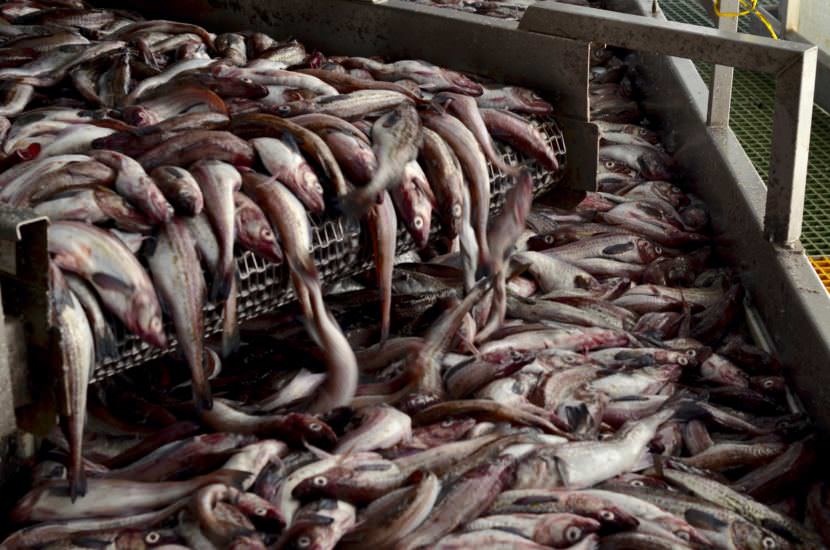
Unalaska is America’s most productive fishing port – hauling in over 780 million pounds of seafood in 2015. That fish gets shipped all over the world and eventually — after processing — some of it comes back to Unalaska.
But you can’t buy fresh fish in town.
At one of Unalaska’s grocery stores, the frozen fish section is almost entirely fish from Asia.
There’s whole rabbitfish from Vietnam. Baby tuna wrapped in plastic from Vietnam. A bunch of mussels from New Zealand.
Down the street at the Safeway, you can buy fish from Alaska, but it has some stamps in its passport.
Like wild Alaskan cod fillets originally caught in Alaska, then sent to Asia for processing and then coming back to Unalaska frozen and packaged up.
Even though Unalaska brings in more fish than anywhere in America, it’s all exported, so you can’t buy it fresh.
Jörn Scabell is visiting from Bremerhaven, Germany – he’s the head of the seafood purchasing department at FRoSTA, a European frozen food manufacturer.
“We’re always trying to buy from certified fisheries that are really sustainable,” Scabell said.
FRoSTA buys Pollock fillet blocks to make fish fingers and breaded fillets. For this season, FRoSTA is snapping up 3.3 million pounds — roughly half of what they’ll buy over the course of the year.
“It’s really big business and of course we need more,” Scabell said.
According to Michael Coleman — general manager of Coastal Alaska Premier Seafoods — the pollock gets sent all over the world.
“The fillet block goes to Germany and a little bit goes to McDonald’s users,” Coleman said. “The other roughly half of the product goes to Japan for surimi and Korea for surimi products.”
In all it takes about 80 days from the fish being caught in the Bering Sea, processed, packed up in Unalaska and shipped to Germany. Then the fillet blocks get turned into fish products that can be bought across Europe.
So I asked my brother, Eli, who lives in Amsterdam to look for it the next time he was at the store.
“I’m at the fish station now,” Eli said. “It does look as if there are fish sticks that are from Alaska.”
The fish sticks Eli found were made with fish from the Bering Sea. He took them home for dinner.
“It doesn’t necessarily bring up memories of being in the U.S., but it’s nice,” Eli said. “It’s surprising. Maybe it’s kind of American because of the breaded parts.”
Eli prefers fresh fish, but the frozen Alaska fish he gets is still fresher than the fish I can buy in the grocery stores.
To get fresh fish in Unalaska, you have to catch it yourself.
Zoe Sobel is a reporter with Alaska's Energy Desk based in Unalaska. As a high schooler in Portland, Maine, Zoë Sobel got her first taste of public radio at NPR’s easternmost station. From there, she moved to Boston where she studied at Wellesley College and worked at WBUR, covering sports for Only A Game and the trial of convicted Boston Marathon bomber Dzhokhar Tsarnaev.




